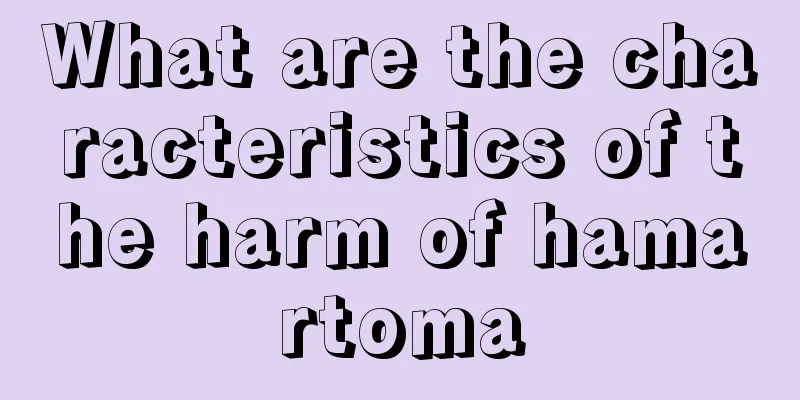What are the dangers of frequent hair dyeing

|
Hair dyeing has become a fashion nowadays. Some young people can dye their hair black as their mood changes, and then match it with clothes and makeup to fully show their personality and charm. However, middle-aged people have to dye their hair black due to the continuous growth of white hair. The frequency of hair dyeing has increased, which will definitely cause certain damage to the hair and even damage the health of our body. Therefore, we suggest that friends should reduce the frequency of hair dyeing in normal times. 1. Hair dye can turn the white hair on people's heads black and improve people's image, so many people with white hair like to dye their hair, hoping to make themselves look younger and more beautiful. However, new scientific research has proved that chemical hair dyes not only "blacken" the surface of the hair, but are also absorbed into the cortex of the hair and eventually enter the skin through the cortex, causing harm to the human body. Moreover, chemical hair dyes will inevitably dye the scalp and be directly absorbed by the hair follicles and cortex. However, dyeing your hair too frequently can cause serious harm to your health. There is a chemical substance called "phenylenediamine" in traditional hair dyes. Its role in the hair dyeing process is to open the hair scales on the surface of the hair through a chemical reaction, allowing the dye to enter the hair to achieve the purpose of coloring. Because "phenylenediamine" is called "colorant" by pesticide manufacturers, its disadvantage is that not only does it take a long time to color, at least one and a half hours each time, but "phenylenediamine" is a toxic substance that enters the human body through the roots of hair, becoming a major cause of human disease and directly endangering health. 2. Traditional hair dyes use bleaching and dyeing technology to dye hair. Bleaching and dyeing means using chemicals to open the hair scales to allow dyeing substances to enter the hair to achieve the purpose of dyeing. People who dye their hair frequently open the hair cuticles, which often damages the hair quality. In addition, after the hair scales are opened, some chemical substances such as diphenylamine, hydroquinone, lead, mercury, etc. enter the hair, causing great damage to the hair, destroying the natural growth environment of the hair, and causing a large loss of nutrients in the hair. 3. Oxidative hair dyes, which have always occupied 70%-80% of the market share of hair dye cosmetics, are mainly composed of aniline compounds and supplemented by phenylenediamine, para-oxyphenol and para-toluenediamine compounds. Among them, p-toluenediamine has a small molecular weight and can easily penetrate into the hair marrow, causing skin allergies and symptoms such as redness, swelling, rashes, blisters, pain and itching. When hair dye is allergic, it can also induce asthma, anemia and other diseases. A few inorganic hair dyes, such as lead salts and silver salts, contain heavy metal ions that are more harmful to the human body. Once they enter human organs, they will be difficult to metabolize and excrete, which can easily cause cumulative poisoning and lead to some difficult-to-treat diseases. Among hair dyes, the most controversial issue is carcinogenicity. In 1975, American laboratories discovered that 89% of oxidative hair dyes were mutagenic. The United States once tested 169 permanent hair dyes sold by eight major companies on the market and found that 150 of them (80%) were carcinogenic. Although the U.S. Cosmetic Ingredient Review Steering Committee has pointed out after years of research that the vast majority of animal tests and epidemiological data do not support the claim that paraphenylenediamine can cause teratogenicity and carcinogenesis in humans. However, many medical experts believe that long-term and frequent use of hair dyes may increase the risk of various tumors and increase the chances of developing bladder cancer, lung cancer, breast cancer, cervical cancer, and skin cancer. Moreover, hair dyes contain phenylbutanone, which can not only cause hemolysis and leukemia, but also cause the breakage of lymphocyte chromosomes. After reading our introduction to the dangers of frequent hair dyeing, I believe everyone has seen that the harm of hair dyeing is very great. Because chemical hair dyes are directly absorbed by hair follicles and cortex, they will directly damage our hair, causing hair to lose luster, moisture, etc. Therefore, for the sake of health, please do not dye your hair frequently and for a long time. |
<<: Is there any harm in opening the eyes
>>: What are the hazards of hair treatment ointment
Recommend
Can kidney stones be treated if they are in the kidneys?
When it comes to stones, the two parts of the bod...
What to do if you have vomiting blood or bleeding in the late stage of liver cancer? Take these four kinds of care
What should you do if you vomit blood and have bl...
How to increase bone density
If you want to increase bone density, various nut...
What should I do if I have difficulty breathing, chest tightness, and abdominal distension?
Difficulty breathing, chest tightness and abdomin...
Is it okay not to wear underwear at night?
I always wear underwear when I sleep. Is it okay ...
What to do if you have lost your eyesight and have many dreams and poor sleep quality
According to surveys, today's adults sleep le...
What are the causes of liver cancer
We all know that liver cancer can cause great har...
Uses of talcum powder
The functionality of talcum powder is very powerf...
What foods contain keratin
Keratin is actually a type of protein, and we all...
How is bile produced and excreted?
Human liver cells secrete a liquid, which is call...
Why do I suddenly shake when I fall asleep
Have you ever had this experience: when you are h...
How long does it take to eat red bean and barley porridge to remove spleen dampness
Many people know that red bean and coix seed porr...
Causes of physical fatigue
Work has become a part of our life rhythm. Each o...
What is the difference between cervical cancer and uterine cancer
Cervical cancer and uterine cancer occur in diffe...
Why does my stomach hurt when it contracts?
The stomach is an important part of our body. A s...









